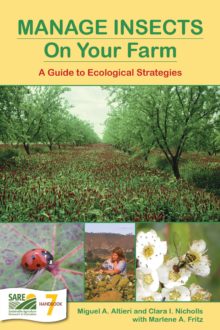Rolling out your Strategy
Once you have a thorough knowledge of the characteristics and needs of key pests and natural enemies, you’re ready to begin designing a habitat-management strategy specifically for your farm.
- Choose plants that offer multiple benefits — for example, ones that improve soil fertility, weed suppression and pest regulation — and that don’t disrupt desirable farming practices.
- Avoid potential conflicts. In California, planting blackberries around vineyards boosts populations of grape leafhopper parasites but can also exacerbate populations of the blue-green sharpshooter that spreads the vinekilling Pierce’s disease.
- In locating your selected plants and diversification designs over space and time, use the scale — field- or landscape-level — that is most consistent with your intended results.
- And, finally, keep it simple. Your plan should be easy and inexpensive to implement and maintain, and you should be able to modify it as your needs change or your results warrant.
In this book, we have presented ideas and principles for designing and implementing healthy, pest-resilient farming systems. We have explained why reincorporating complexity and diversity is the first step toward sustainable pest management. Finally, we have described the pillars of agro-ecosystem health (Figure 1):
- Fostering crop habitats that support beneficial fauna
- Developing soils rich in organic matter and microbial activity
Throughout, we have emphasized the advantages of polycultures over monocultures and, particularly, of reduced- or no-till perennial systems over intensive annual cropping schemes.
